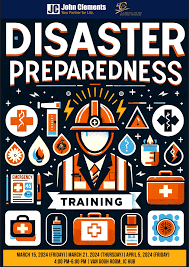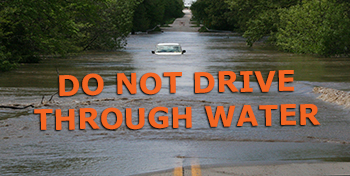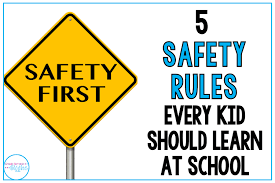The Importance of Preparedness: Be Ready for Anything
Preparedness is a critical aspect of ensuring the safety and well-being of individuals and communities in the face of emergencies and disasters. Whether it’s a natural calamity like a hurricane, flood, or wildfire, or a man-made crisis such as a power outage or a pandemic, being prepared can make all the difference in how effectively we can respond and recover.
Key Elements of Preparedness
Preparedness involves several key elements that individuals and communities should consider:
- Planning: Develop an emergency plan that outlines what to do in various scenarios, including evacuation routes, communication strategies, and meeting points.
- Supplies: Stock up on essential supplies such as food, water, medications, first aid kits, and other necessities that can sustain you during an emergency.
- Educational Resources: Stay informed about potential hazards in your area and educate yourself on how to mitigate risks and respond appropriately.
- Training: Participate in training sessions on first aid, CPR, disaster response, and other relevant skills that can be invaluable during emergencies.
The Benefits of Being Prepared
Being prepared offers numerous benefits that can help save lives and minimize damage during crises:
- Rapid Response: When you are prepared, you can act quickly and decisively in the face of an emergency, potentially preventing further harm or loss.
- Peace of Mind: Knowing that you have taken steps to prepare for emergencies can reduce anxiety and fear during uncertain times.
- Community Resilience: Communities that prioritize preparedness are better equipped to bounce back from disasters and support one another in times of need.
- Saving Lives: Proper preparedness measures can save lives by ensuring timely access to medical care, shelter, food, and other critical resources.
In Conclusion
In conclusion, preparedness is not just a precautionary measure—it is a proactive approach to safeguarding lives and property when disaster strikes. By investing time and effort into preparing for emergencies today, we can build stronger, more resilient communities for tomorrow.
Essential FAQs on Preparedness: Planning, Supplies, and Resources for Emergencies
- What is preparedness and why is it important?
- How can I create an emergency plan for my family?
- What supplies should I have in my emergency kit?
- Where can I find information about potential hazards in my area?
- Are there any training programs available for disaster preparedness?
- What are the steps to take during an evacuation order?
- How can I stay informed during a crisis or emergency situation?
- What resources are available for individuals with special needs during emergencies?
What is preparedness and why is it important?
Preparedness is the proactive process of planning and equipping oneself or a community to effectively respond to emergencies and disasters. It involves developing strategies, acquiring necessary supplies, and gaining relevant skills to mitigate risks and minimize the impact of unforeseen events. Preparedness is crucial because it enables individuals and communities to act swiftly and decisively in times of crisis, potentially saving lives, reducing damage, and promoting resilience. By being prepared, we can enhance our ability to cope with emergencies, maintain a sense of control amidst chaos, and foster a safer environment for ourselves and those around us.
How can I create an emergency plan for my family?
Creating an emergency plan for your family is crucial for ensuring everyone’s safety and well-being during times of crisis. Start by identifying potential hazards in your area, such as natural disasters or other emergencies. Develop a detailed plan that includes evacuation routes, designated meeting points, important contact information, and a list of essential supplies to have on hand. Make sure every family member understands their role in the plan and practices emergency drills regularly. Communication is key—keep everyone informed and updated on the plan so that everyone is prepared to act swiftly and effectively when needed.
What supplies should I have in my emergency kit?
When preparing an emergency kit, it is essential to include a variety of supplies to ensure you are ready for any situation that may arise. Some key items to consider including in your emergency kit are non-perishable food items, such as canned goods and energy bars, an ample supply of water, a first aid kit with essential medical supplies, flashlights with extra batteries, a battery-powered or hand-crank radio, personal hygiene items, important documents (such as identification and insurance information), cash in small denominations, and any necessary medications. Additionally, consider including items specific to your family’s needs, such as baby supplies or pet care items. By having a well-stocked emergency kit, you can be better prepared to handle unexpected emergencies with confidence and resilience.
Where can I find information about potential hazards in my area?
To find information about potential hazards in your area, you can start by visiting local government websites, such as your city or county’s emergency management department. These websites often provide detailed resources on common hazards like floods, wildfires, hurricanes, or earthquakes specific to your region. Additionally, you can explore online tools like FEMA’s Hazard Mapping Portal or the National Weather Service’s website for real-time updates and alerts on weather-related risks. Staying informed about potential hazards in your area is crucial for effective preparedness and response efforts in times of emergency.
Are there any training programs available for disaster preparedness?
Yes, there are various training programs available for disaster preparedness that cater to individuals, communities, and organizations alike. These programs offer valuable knowledge and skills on how to effectively plan for and respond to emergencies and disasters. From basic first aid and CPR training to specialized courses on disaster response strategies, participants can gain the expertise needed to mitigate risks and protect themselves and others during crises. By enrolling in these training programs, individuals can enhance their preparedness levels and contribute to building more resilient communities capable of handling unforeseen challenges with confidence and efficiency.
What are the steps to take during an evacuation order?
During an evacuation order, it is crucial to act swiftly and follow specific steps to ensure your safety and the safety of others. First and foremost, stay calm and listen to official instructions or alerts for guidance. Gather essential items such as identification, important documents, medications, and emergency supplies. Follow designated evacuation routes and avoid shortcuts that may be hazardous. If time allows, secure your home by turning off utilities and locking doors. Stay informed about the evacuation process and potential shelter locations. Lastly, evacuate immediately when instructed to do so, prioritizing your well-being above all else.
How can I stay informed during a crisis or emergency situation?
During a crisis or emergency situation, staying informed is crucial for making timely and informed decisions to ensure your safety and well-being. To stay informed, it is recommended to monitor local news updates from trusted sources such as radio, TV, or official websites. Additionally, signing up for emergency alerts and notifications from local authorities can provide real-time information on evolving situations. Keeping a battery-powered radio or a charged mobile phone handy can also help you stay connected even if there is a power outage. By staying informed through multiple channels, you can better navigate through emergencies and take appropriate actions to protect yourself and your loved ones.
What resources are available for individuals with special needs during emergencies?
During emergencies, individuals with special needs can access a variety of resources to ensure their safety and well-being. These resources may include specialized evacuation assistance, communication devices for the hearing or visually impaired, medical equipment and supplies, accessible transportation options, and designated shelters equipped to accommodate specific needs. Local emergency management agencies, disability advocacy organizations, and community support groups often provide information and assistance tailored to individuals with special needs to help them navigate emergencies effectively and receive the necessary support during challenging times.




